The Story of the American Expeditionary Forces |
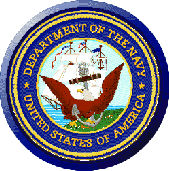
|
THE
|
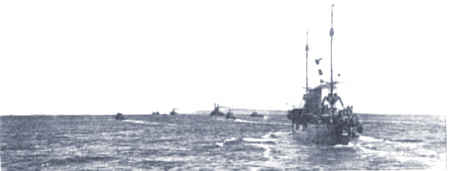
Mine Squadron One Underway

...A collaboration between a civilian, Ralph Browne, and a naval officer, Commander S.P. Fullinwider, made possible the mining of the 250 mile North Sea Strait between Scotland and Norway. A glance at the map had caused many civilians, including Assistant Secretary Roosevelt, to consider the feasibility of such an operation. But navy men knew that with the mines then available (which required actual contact to explode) the mine barrage would require a logistical investment far beyond its return. Besides in 1917 the ships required for laying and patrolling the field were needed to conduct the convoys.
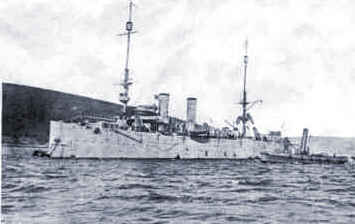 USS San Francisco, Flagship of Mine Squadron OneBy July, however, Browne and Fullinwider had a mine, with an electrical antennae firing device, which could reduce the original estimate of 400,000 old-type mines to 100,000 of their version. In November the British and Americans agreed to try the scheme. 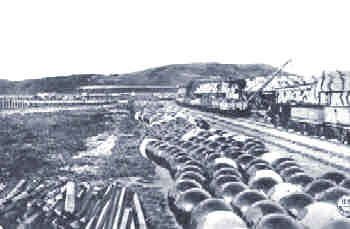 Mine Dump at Inverness, ScotlandSeven months later the mining force arrived in Scotland to begin the dangerous task. with the American Rear Admiral Joseph Strauss in general command and another Yankee, Captain Reginald R. Belknap, a stern disciplinarian and experienced mine-force commander, in charge of the actual sea work, the ten mine-layers were ready for their mission.
During the five months remaining, the Americans planted 56,571 of the 70,177 mines in the North Sea Barrage. Although the British and American mine-layers did not complete the planned minefield, they struck a hard blow at the submarine... 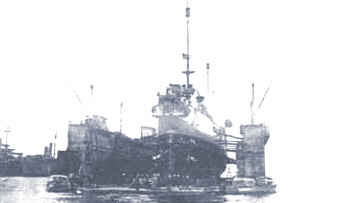 Minelayer in Drydock, Invergordon, ScotlandThe men who planted the North Sea mine barrage were, as a member of Sim's staff said, "living on the edge of eternity," for they went to sea in ships packed with high explosives. As...Captain Belknap recalled, "mines were constantly at one's elbow. . ." In a fifty-hour period, the makeshift minelayers (two former cruiser, relics of the 1880s, and eight converted merchantmen and passenger boats) would steam out to position, form three to five abreast at 500 your intervals, drop their one yard in diameter mines, containing 300 pounds of TNT overboard, and return to base. "Precision and quickness of action while at sea were imperative, form start to finish," Captain Belknap noted. To ensure efficiency, Belknap was strict, very strict, but he was fair and apparently well liked. 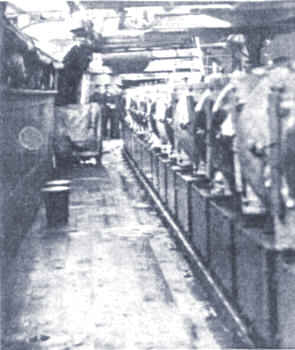 Mines Aboard ShipThroughout the thirteen regular excursions, there could be no relaxation from tension. The actual discharging of mine might last from just under four to seven hours, but cruising in darkness or in bad weather with such cargo kept everyone alert. As Belknap wrote his wife in August, "Interesting as these trips are, no sane person would take two for pleasure." 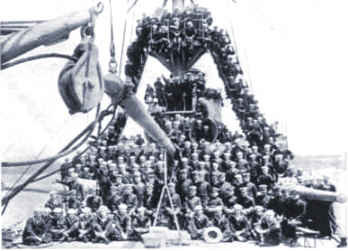 Officers and Crew of USS San FranciscoEven after a safe return to Inverness or Invergordon, it took time to unwind form the tension. Yet, the men evidently maintained high spirits, and there was no friction among their leaders. "A more congenial, cordially friendly lot I never saw," was Belknap's description of his captains. 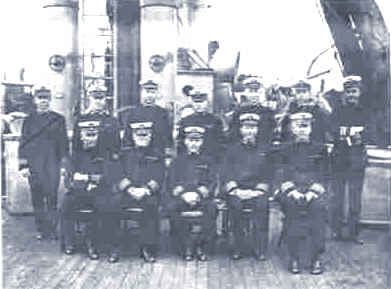 Ship Captains of Mine Squadron One
| ||||||||||||||||||||||||||||||
|
Sources and thanks:
Sources and Thanks: The text is from The War to End All Wars: The American Military Experience in World War I by E.M. "Mac" Coffman which is recommended as the finest
survey ever produced on the US military effort in the Great War.
Contributor Ray Mentzer helped with the photos. |
To find other Doughboy Features visit our |
Membership Information  Click on Icon |
For further information on the events of 1914-1918
visit the homepage of |
Michael E. Hanlon (medwardh@hotmail.com) regarding content,
or toMike Iavarone (mikei01@execpc.com) regarding form and function.
Original artwork & copy; © 1998-2000, The Great War Society